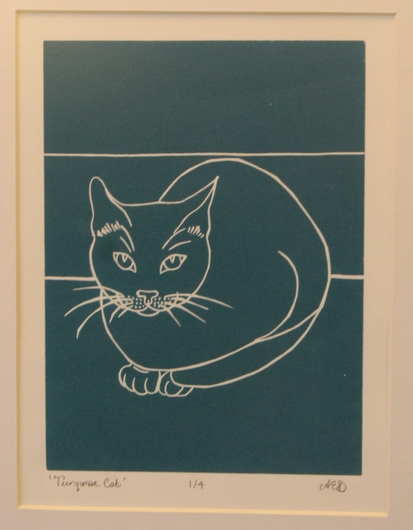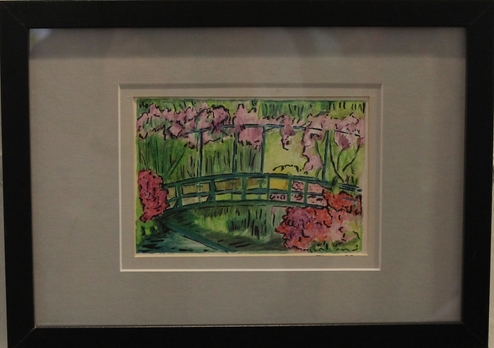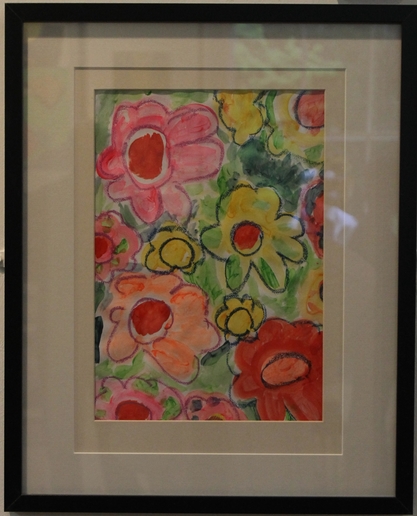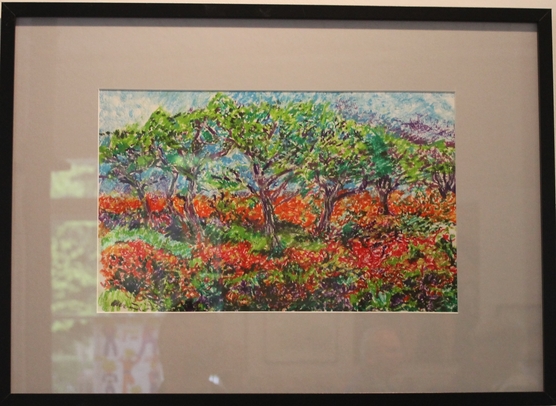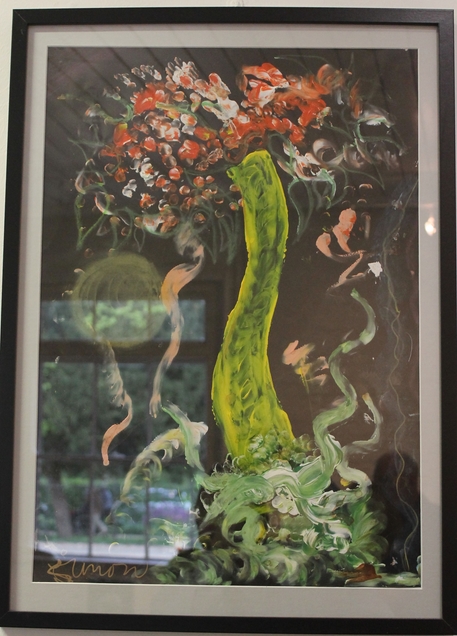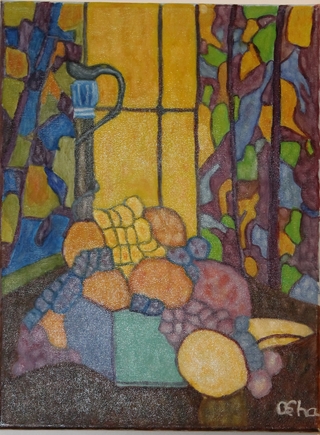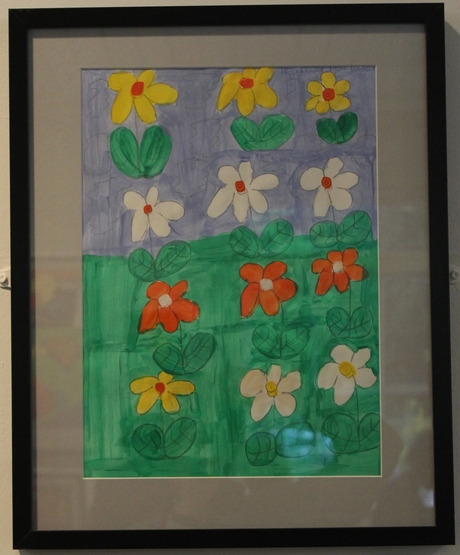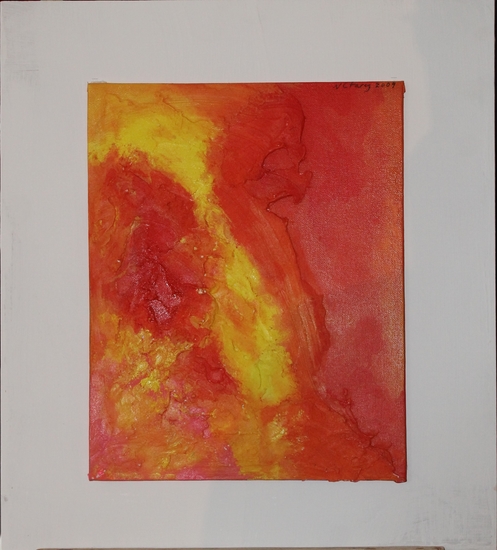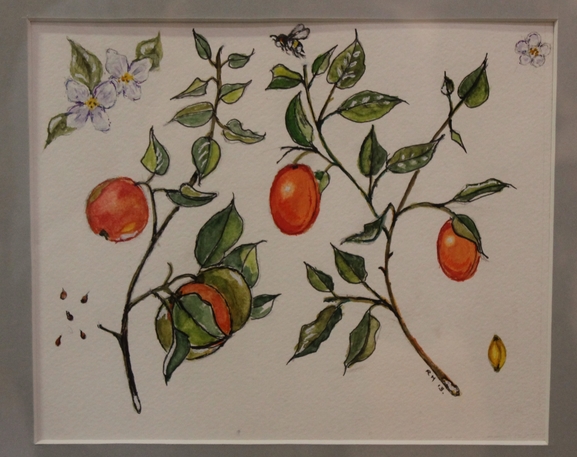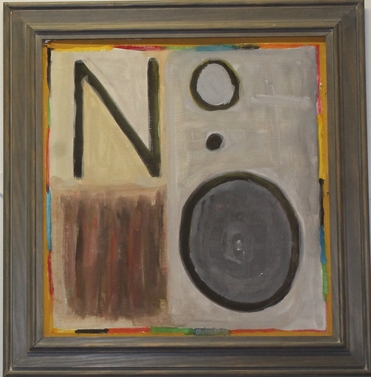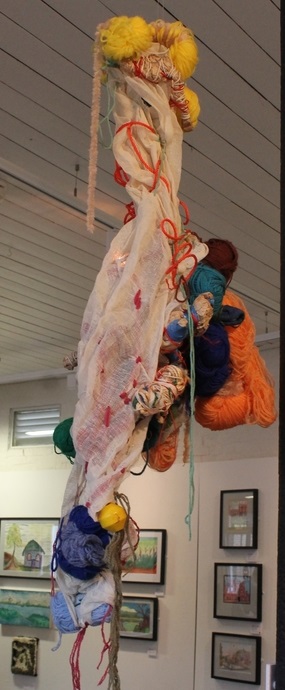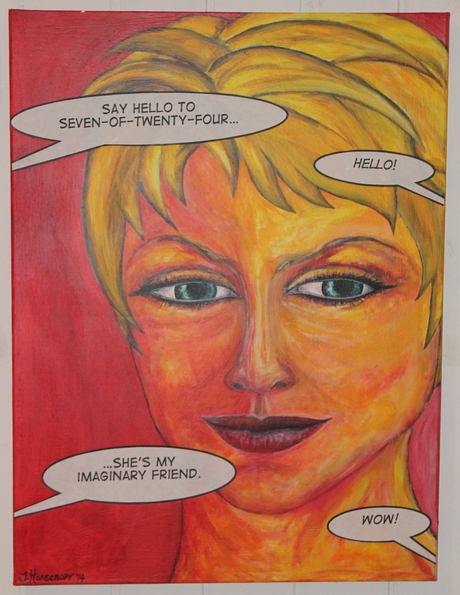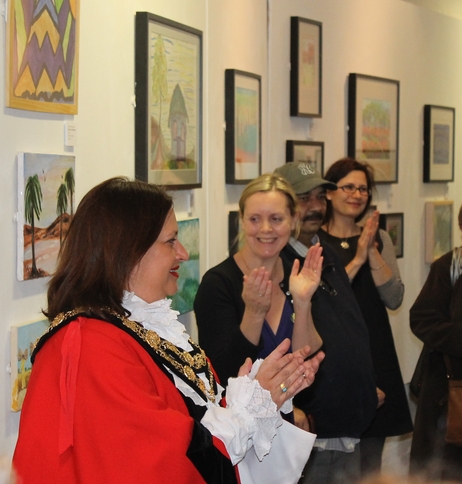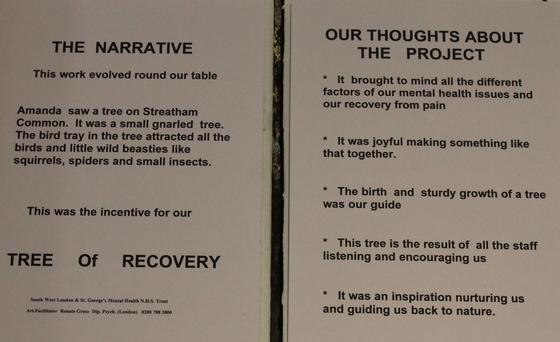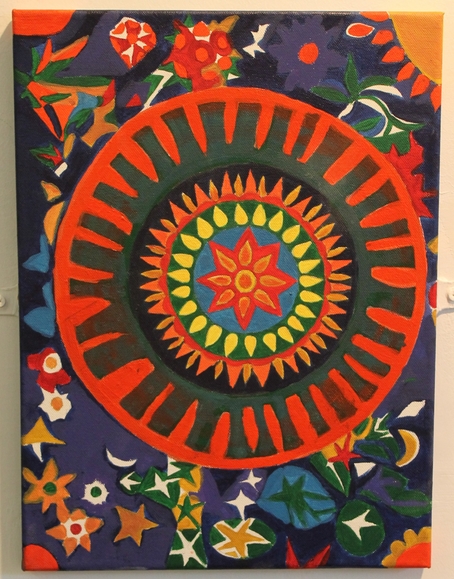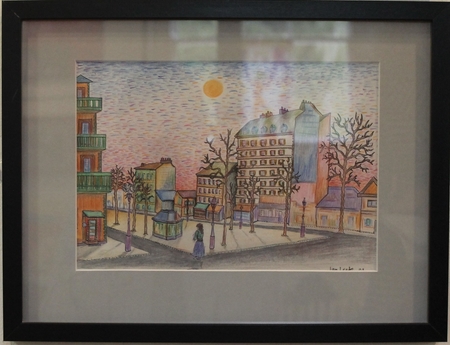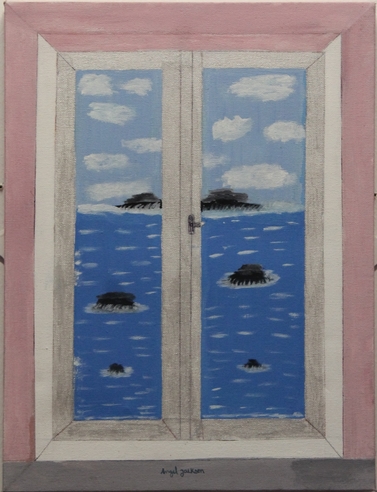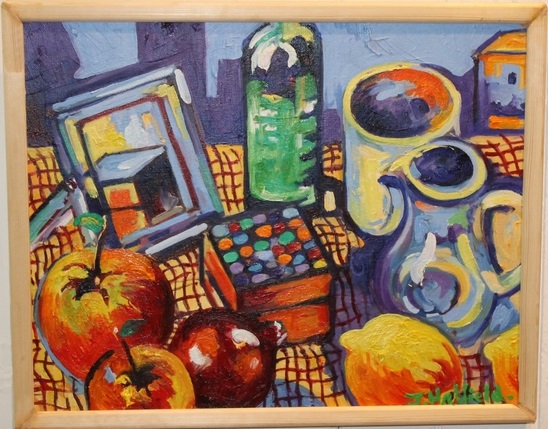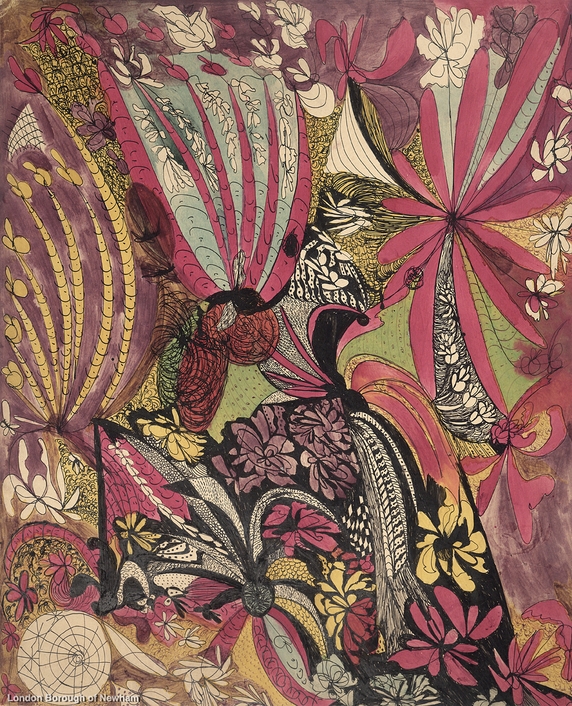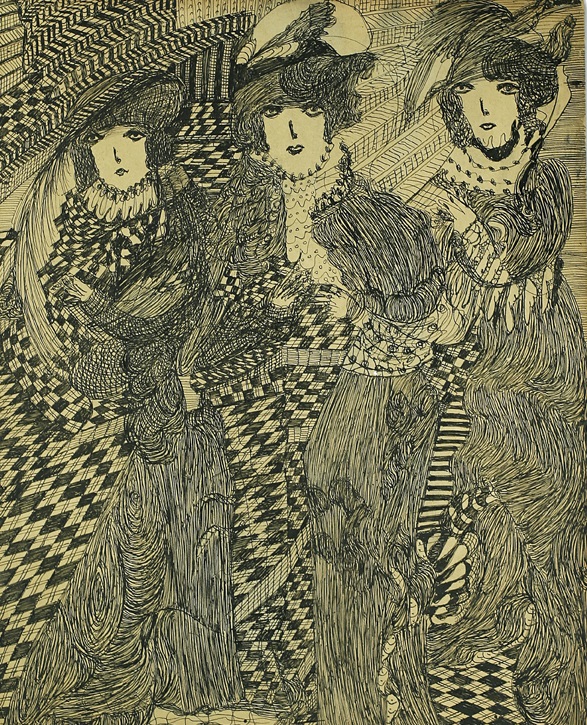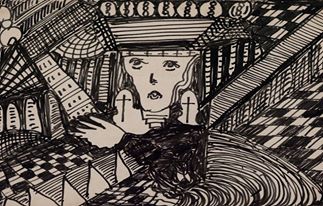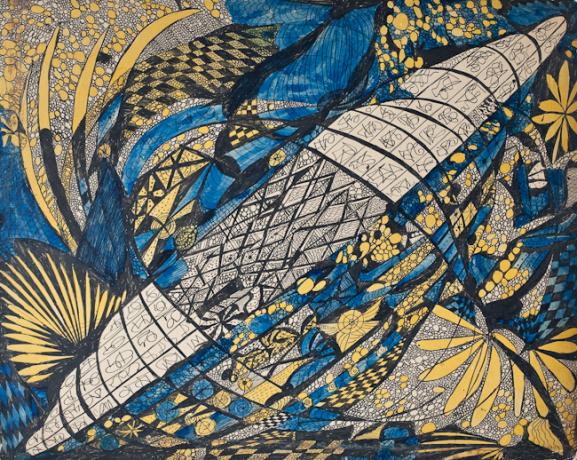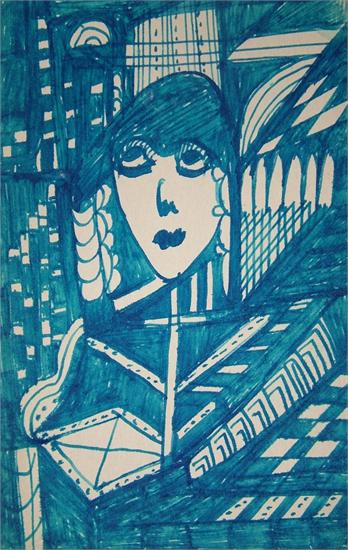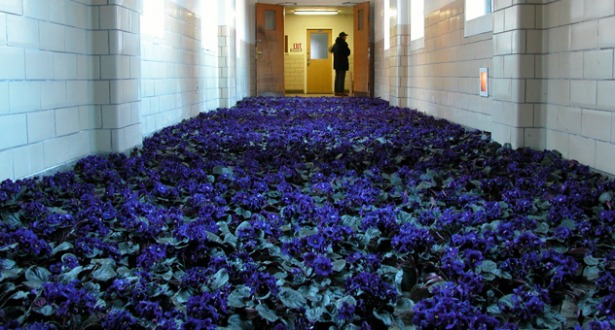With our focus on creativity and mental health, we were very interested to come across an extensive article connecting the two subjects from the Royal College of Psychiatrists. In this piece Dr John Morgan, now Professor John Morgan explores the links between the creativity of several renowned artists, authors, poets and other luminaries in relation to their mental health. The article was written and originally published as part of the college’s ‘Changing Minds’ campaign. This ran between 1997 and 2003 seeking to improve the public’s knowledge of mental health issues and thus helping to reduce the stigma all too often suffered by those affected.
With thanks to Professor John F Morgan and the Royal College of Psychiatrists, as well as the National Portrait Gallery for the illustrations used.
© Royal College of Psychiatrists
© National Portrait Gallery
Creativity and Mental Disorder
“Great Wits are sure to Madness near ally’d.”
John Dryden

John Dryden by Sir Godfrey Kneller, Bt
oil on canvas, 1693
On display at the National Portrait Gallery
Imagine a world without melancholy. What poetry or wisdom or humour would be lost in such a world? The stereotype of the artist as ‘mad, bad and dangerous to know’ suggests that mental disorder and creative imagination come out of the same primordial soup. But anyone familiar with mental illness can testify that chaos and self-destructiveness are more common than creativity. The trait may energise and inform a creative mind, but the state of mental disintegration removes the ability to communicate.
“The mind is its own place, and of itself Can make a Heaven of Hell, a Hell of Heaven.”
John Milton, Paradise Lost

John Milton by Unknown artist
oil on canvas, circa 1629
Creativity emerges in us all; in the jobs we do, the games we play and the relationships we forge. Few of us can enter the realm of ‘genius’, such as Milton’s poetic wisdom, but the drive to create is common to humanity, with or without mental illness. We all gain self-confidence and fulfilment through that drive. For people with mental illness the creative process can provide a means of recovery, when feelings are beyond words or self-esteem hits rock bottom. The creativity of employment makes us feel valued. Humour lets us put things in perspective. Therefore understanding the link between creativity and mental disorder helps us understand the nature of both.
What is the link between creative genius and mental disorder?
“There is no great genius without some touch of madness.”
Seneca (4 BC – 65 AD), Epistles
The Ancient Greeks saw Art as a product of mental disorder, bestowed on mortals by the Gods. This link between creativity, madness and divinity was continued through the Renaissance, and into the Romantic Movement that swept Europe in the eighteenth century. The archetype of the ‘mad genius’ is now commonplace. There are as many theories linking creativity and mental disorder as there are commentators in this field. Sticking to facts, the eminent psychiatrist Felix Post (deceased) looked for various mental abnormalities in the biographies of 291 world-famous men. All of these had creative track records in science, music, politics, arts, philosophy and creative writing. He identified 51 politicians, 53 scientific investigators, mathematicians and inventors, 57 composers, 75 painters, sculptors and architects (artists), 50 philosophers, theologians, historians and economists, 39 poets, 76 novelists and 52 dramatists (creative writers). Some might be considered geniuses, like Einstein, Monet, Picasso, and Dickens. All were sufficiently prominent to have affected the way we look at the world. What did he find?

Charles Dickens, by Herbert Watkins
albumen print, 1858,
who defended himself against bouts of melancholia by a prodigious literary output.
Almost all had shown outstanding talent from an early age. Ambition, discipline and perseverance were common, even in those with chaotic lifestyles of alcoholism and sexual disinhibition. Few inhabited ivory towers of isolation; the vast majority was highly sociable, often described as captivating or alluring to others.
Creativity and neurosis
Severely abnormal personality traits were found in poets and novelists, but not in the other groups. Much more common were mild but real eccentricities of temperament. These included what doctors call schizotypal features: vague speech, peculiarities of appearance and personal hygiene, and occasional trance-like states. Dramatic traits were even more common, such as narcissism or histrionic behaviour and temper tantrums. Most common of all was neurosis, taking the form of anxiety, depression and obsessionality. Mood traits affected over three-quarters of artists, but also half of all scientists and politicians. None of these personality traits was handicapping, but they did appear to have impacted on lifestyle and personal relationships. Nearly half of artists and poets had remained single, with lifelong virginity more common in some and an unusual number of sexual relationships in others.
We poets in our youth begin in gladness;
But thereof comes in the end despondency and madness
William Wordsworth
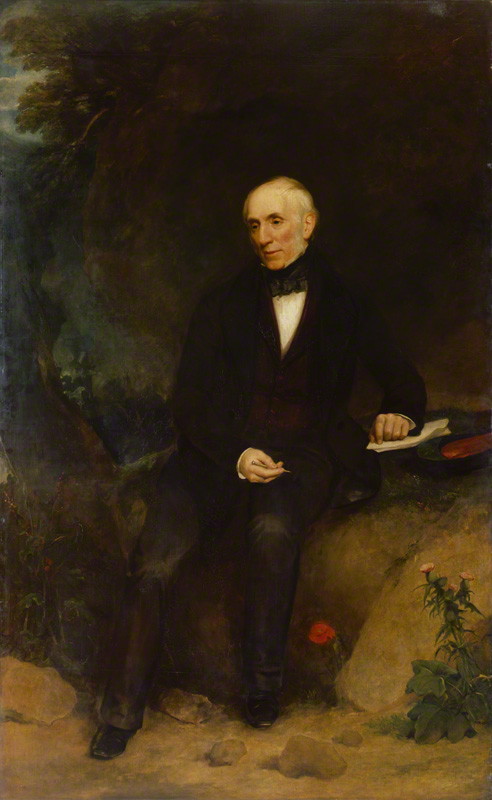
William Wordsworth by Henry William Pickersgill,
oil on canvas, circa 1850 (1833)
Severe mental illness was not more common, with the exception of severe mood disorders in writers. Other mood disorders were however greatly elevated. Clinical depression and anxiety disorders affected half of creative writers, and a quarter to a third of all the others. Suicide rates were also higher except in politicians, composers and intellectuals. Suicides were commonest in poets, and attempted suicides in novelists.
Some of these mood disorders appeared to stem from alcoholism and drug misuse, which were common in all groups except scientists and intellectuals, and as high as 42% in dramatists.
The notion of genius emerging from childhood unhappiness was not supported by Post. Most parents had supported their creative children, materially and emotionally nurturing, and the families themselves had often featured other gifted individuals. Among writers alone, there was evidence of family histories of mood disorders and alcoholism.
What should we conclude? Most of Post’s ‘creatives’ showed evidence of some mental disorder, particularly neuroses, and a third had suffered acute mental illness. A whiff of mental disorder seems to be common in those with heightened creative powers.
However, a substantial minority of highly creative individuals are entirely mentally stable. It is clearly possible to be creative without psychopathology, and inaccurate to equate mental disorder with creativity. In under-estimating the commonality of mental disorders in the general population, we may over-estimate the commonality among creative individuals. Nonetheless there is strong evidence that neurotic traits of anxiety, depression and obsessionality play a part in the creativity of writers. Eccentricities of personality, not amounting to disorder, do seem common in creative writers, and to a lesser extent in other creatives.
“Necessity may be the mother of invention, but
dissatisfaction is its father.”
Anthony Storr (deceased), the eminent psychotherapist and writer, spent much of his career considering the process of creativity in books such as ‘The Dynamics of Creation’ and ‘Music and the Mind’. He construed creativity as a product of the adaptability of human nature. The constant need for humans to adapt themselves to changing social and physical environments requires inventiveness. The dissonance between external reality and ourselves becomes manifest in creativity, such that the most creative of us may also be the most ‘at odds with themselves and the world’. Humans are constituted so that ‘that they are never completely satisfied, always able to imagine something better. Necessity may be the mother of invention, but dissatisfaction is its father.’ Dissatisfaction with external reality is allied to notions of neurosis, and common ground is established between Post’s research and Storr’s speculations.
But neurosis is insufficient. Industriousness, ambition, self-discipline and persistence also shine forth in the cases described by Post. So it seems that strength of character (ego strength) combined with vulnerability to neurosis generate a potent cocktail of creativity and originality.
Sadder but wiser
A world of sorrow and suffering underpins much spiritual and philosophical thought. Aristotle noted the tendency of philosophers towards melancholia: “Why is it that all those who have been eminent in philosophy or politics or poetry or the arts are clearly melancholics, some of them to such an extent as to be affected by diseases caused by the black bile?”
The story of humanity in the Old Testament begins with original sin, and the Book of Job tackles the hardest process of all, making sense of suffering. The passage from innocence into sadness and wisdom is a narrative commonly explored in psychotherapy, spiritual enlightenment and literature. Shakespeare makes full use of the theme as Hamlet journeys from naivety into sagacity via mental disintegration, a history designed to hold, as t’were, the mirror up to nature
The anatomy of melancholy is crippling, but has also bred the physiology of creativity. This theme is exemplified in the lives of three great melancholics. In the case of John Clare, the nineteenth century poet, his poetry allowed him to rise above his mental torment. For Spike Milligan, manic depression was been a heavy price to pay for the originality of his humour, while the cartoon adventures of ‘Peanuts and Charlie Brown’ gave Charles Schulz a forum to transcend his natural pessimism.
I am! yet what I am none cares or knows
– John Clare’s Melancholia
“I am! yet what I am none cares or knows,
My friends forsake me like a memory lost;
I am the self-consumer of my woes,
They rise and vanish in oblivious host,
Like shades in love and death’s oblivion lost;
And yet I am! and live with shadows tost”
Believed to be the last writing of John Clare, this poem was published in the Annual Report of the Medical Superintendent of Saint Andrews Hospital.

John Clare, by William Henry Hunt
watercolour, 1820s
What a paradise begins with life!
John Clare was born in 1793 in the small Northamptonshire village of Helpston. The child of virtually illiterate parents, he drew inspiration from the world of nature around him. Largely self-taught, his initial works were greeted with enthusiasm but public acclaim was not sustained and he gradually declined into mental illness and poverty. Leaving Helpston in a state of mental anguish, John Clare was eventually detained in the Northampton County Asylum from 1842 until he died in 1864.
“Ah! What a paradise begins with life,” he wrote, “and what a wilderness the knowledge of the world discloses. Surely the Garden of Eden was nothing more than our first parents entrance upon life, and the loss of it their knowledge of the world.”
Perhaps the foremost of British nature poets, he experienced childhood as near idyllic, and the world never subsequently met these early expectations. Despair and mental torment were gradually replaced with a fully-fledged psychosis of delusional ideation. Plagued by nihilistic delusions and without an audience for his poetry, one might have expected an end to his creative writing. Instead his poetry continued to flow, with pockets of wit and wisdom in the midst of melancholia.
Would John Clare have attained creative genius without a history of psychotic depression? Undoubtedly he would have, with some of his finest work written in youthful mental equilibrium. But the cruel emotion of existential despair provided the raw ingredients for some his most profound work.
‘The Chief Lunatic of all England’
– Spike Milligan’s Manic Depression
The late Spike Milligan, one of Britain’s leading comic writers and performers, spoke openly about his experiences of manic depression. In ‘Depression and How to Survive it’, co-authored with Anthony Clare, he tackled the public’s misunderstanding of mental illness.
Born in India in 1918, where his father and grandfather were NCOs, he enjoyed a pampered childhood of nanny and servants. His nanny would walk miles each day to bring him his lunchtime meal at school: ‘What i was experiencing was the end of the Empire’
But as for John Clare, he received a rude awakening from the idyll of childhood. The disintegration of the British Empire forced his family back to a small terraced house in South London in 1933. Spike’s mother had to feed her family on a budget limited by father’s unemployment.
There followed a series of ups-and-downs in Spike’s life that prefigured his later manic-depression; hopeless, desolate jobs, his war-time experiences and near death from a mortar bomb, a musician’s career, fame and fortune from the Goons, and eventual elevation to the pantheon of comic genius. But fame concealed personal dissatisfaction, including his first mental breakdown and the death of his second wife. Spike had lived with the effects of Manic Depression since he was wounded during World War II. Later he was to call himself ‘The Chief Lunatic of all England‘ in an interview with the Observer newspaper, and worked as patron of the Manic Depressive Fellowship. Depression is all part of the paradox that went to make the Chief Lunatic also the Funniest Man of the Millennium, a title bestowed upon him in a recent BBC News on-line poll.
“A thousand grim winters”
Felix Post had noted a link between manic depression and creativity. To what extent was Spike Milligan’s comic genius the product of his mental illness? His torrents of comic creativity seem to have coincided with episodes of hypomania, a state preceding the full delusional intensity of mania. Cultivating the energy and idiosyncrasy of this elated mood, he seemed to have ridden the crest of that wave to communicate a sense of hilarity. But beyond that state, in the throes of full mania, he was unable to harness or communicate his thoughts and feelings. The state of depression brought nothing but paralysis. Ultimately the creative benefits of hypomania seem too heavy a price for the ‘grim winter’ of melancholia.
“Manic Depression” by Spike Milligan
St Luke’s Hospital, Psychiatric Wing 1953/4.
The pain is too much
A thousand grim winters
Grow in my head
In my ears
The sound of the
Coming dead.
All seasons
All sane
All living
All pain.
No opiate to lock still
My senses
Only left.
The body locked tenses.
Charles Schulz, Peanuts and Charlie Brown
How would you imagine the creator of the classic cartoon script ‘Peanuts’? A light- hearted jester? A whimsical wit? Charles M. Schulz was far removed from jocularity, once commenting that “All is the product of anxiety and melancholy”.
Creativity through humour can be a way of transcending or sublimating the most painful of emotions. Schulz first displayed his creation Charlie Brown in 1950. In the original script, Charlie is pictured speaking to his dominant counterpart, Lucy:
“I have deep feelings of depression.” “What can I do about it?”
“Snap out if it,” replies Lucy.
By humour, Schulz learned a temporary strategy to ‘snap out of it’. He brought his own temperament to bear in the increasingly homogeneous medium of cartoon, exploring his low self-esteem and sense of social isolation. Charlie Brown was a real character in a phoney era of American conformity, and Schulz used humour to transcend the existential problems with which he and his informed generation were grappling.
“My whole life has been one of rejection.”
Schulz himself had been painfully shy as a child. Much like John Clare, he was born the only child of a loving and unsophisticated father and mother. But the ‘real’ world could never live up to this standard. He made few friends at school, where his early talent at drawing was staggeringly overlooked. He was known as the skinny kid, the spotty kid, and never recovered his equilibrium. Later he declared,
“My whole life has been one of rejection.”
The decline from joyful infancy into a world of sorrow mirrors John Clare’s experiences, as if expelled from the Garden of Eden. The final fall came with his mother’s death, a “loss from which I sometimes believe I never recovered.”
“Life is full of anxieties and fears and tears”
Later success could never compensate this sense of loss. He was plagued with insecurity and depression throughout his illustrious life, for which no amount of achievement could provide remedy.
“I don’t know the meaning of life,” he once said. “I don’t know why we are here. I think life is full of anxieties and fears and tears. It has a lot of grief in it, and it can be very grim. And I do not want to be the one who tries to tell somebody else what life is all about. To me it’s a complete mystery.” Yet almost despite himself he became the figurehead of a vast cartoon industry, generating $1 billion a year. Perhaps Schulz never found contentment, but through Charlie Brown he laughed in the face of his melancholy and gave pleasure to millions.
Iris Murdoch and ‘the Dark Escort of Alzheimer’s’ Disease
“The voyage is over, and under the dark escort of Alzheimer’s she has
arrived somewhere”
John Bailey
Iris Murdoch wrote 26 novels in 40 years. The last was written while she was already suffering from Alzheimer’s disease. Her talent lay in exploring the most difficult concepts of moral philosophy through the edifice of fiction. She once said of her work that she tried to convey “the unique strangeness of human beings”.

Dame Iris Murdoch by Tom Phillips
oil on canvas, 1984-1986
One of her most acclaimed novels was The Bell (1958), describing a Christian community in search of spiritual purity, but torn apart by the conflict between sexuality and religion. The spiritual aspirations of the community are symbolised by a new bell, destined to hang in the tower. As the narrative unfolds, the dashing of these aspirations is represented as the bell suddenly falls into water and sinks without trace.
‘It’s as good as the real thing!’ cried Dora.
‘Nothing’s as good as the real thing,’ said Peter. ‘It’s odd that even a perfect imitation, as soon as you
know it’s an imitation, gives much less pleasure.‘
The Bell, 1958
Murdoch’s genius lay in her ability to explore the complexities of moral philosophy in fiction, thereby rendering it accessible and relevant beyond the narrow confines of academia. A woman at peace with herself, her husband John Bayley said:
‘Iris doesn’t have a demon. Creation is for her a quiet, still, mysterious activity; and as a book is going on she becomes more and more tranquil.’
She herself saw contentment as an escape from self-awareness:
‘Happiness is a matter of one’s most ordinary everyday mode of consciousness being busy and lively and unconcerned with self. To be damned is for one’s ordinary everyday mode of consciousness to be unremitting agonising preoccupation with self.’ For the reader, Murdoch’s work provides a challenging, yet practical guide to the nature of human happiness and the attainment of tranquillity. Yet her own tranquillity was to be permanently disrupted.
“A very very bad, quiet place”
Her last novel was Jackson’s Dilemma (1995), a thriller in which a young poet and novelist receives a confusing letter from his bride the day before his wedding. Ungenerously, a critic in the New York Times drew attention to the otiose phrases and mistakes in that novel’s prose. For example the phrase ”then suddenly” appears three times in one paragraph. This was the first public display of her failing cognitive function, as she declined into Alzheimer’s Disease, described by her as “a very very bad, quiet place, a dark place” In his moving tribute ‘Elegy for Iris’, Iris Murdoch’s husband John Bayley describes the impact of the disease as it tears away at her intellect but somehow preserves her gentle temperament until she was like “a very nice 3-year-old”. She died in Oxford in 1999. Married to her for more than 42 years, John Bayley describes his loss: “For the first few days after her death, I found myself chatting to her about, oh, all sorts of things … and one day I realised she was gone. That was when the awful period came to me. What does one call it? Grieving? Bereavement? I hate the word but that’s what it was.”
In this instance the unremitting progress of dementia brought no creative compensations whatsoever. This is a stark reminder that creativity and mental disorder can be poles apart. Perhaps the last word belongs to her husband, from an interview in New York: ‘In the case of dementia … there’s no point in trying to be generous about it. It’s too frightful, and one just has to face it.’
Mad, bad and dangerous to know – Lord Byron’s Eating Disorder
No individual better encapsulates the Romantic notions of inspired genius than Lord Byron, hovering on the brink of descent into lunacy, yet rising above his ‘madness’ and ‘badness’ to create Don Juan. Don Juan is the work of a troubled and dissatisfied man, a tale of unrestrained hunger, libidinous and gastronomic excess, reflecting the artist himself. It is hard to envisage its authorship without Byron’s own life-long war against his appetites.

George Gordon Byron, 6th Baron Byron
after Richard Westall
oil on canvas, (1813)
Lord Byron was born into a family of reprobates in 1788. Byron’s grandfather was a capricious lecher, passing those attributes to “Mad Jack”, his father. Mad Jack embarked on an incestuous affair with his own sister and left Byron’s mother destitute. On his mother’s side, her ancestors were notable depressives with a strong history of suicide. Physically and sexually abused by his nursemaid, he assumed the title at the age of 10. The narcissism of his adult life arose from a childhood as shy, melancholic and plump. While Charles Schulz alternately fretted and mocked his physical imperfections, Byron sought to conquer them by a preoccupation with body image and conscious manipulation of body shape:
‘I am as vain of my curls as a girl of sixteen’
This fragile state gradually disintegrated into an eating disorder:
“I am grown very thin, however it is the Fact, so much so, that the people here think I am going, I have lost 18 LB in my weight … since January … I have taken every means to accomplish the end, by violent exercise & Fasting, as I found myself too plump.—I shall continue my Exertions, having no other amusement, I wear seven waistcoats, and a great Coat, run and play at Cricket in this Dress, till quite exhausted by excessive perspiration, use the hot Bath daily, eat only a quarter of pound Butcher’s meat in 24 hours, no Suppers, or Breakfast, only one meal a Day, drink no malt liquor, little wine, & take physic occasionally, by these means, my Ribs display Skin of no great thickness, and my Clothes, have been taken in nearly half a yard, do you believe me now?”
“I grow thin daily; since the commencement of my System I have lost 23 pounds in my weight … to 12 st 11 lb … I shall still proceed until I arrive at 12 st and then stop, at least if I am not too fat, but shall always live temperately and take much exercise. … I have reduced myself … to 12 stone 7 lb. … I … now … weigh 12 stone … I shall reduce myself to 11, & there stop … many of my acquaintance … have hardly believed their optics, my visage is lengthened, I appear taller, & somewhat slim, & mirabile dictu !! my Hair once black or very dark brown, is turned … to a light Chesnut, nearly approaching yellow, so that I am metamorphosed not a little.”
“I … am barely 11 stone … with all my clothes, heavy shoes, gaiters &c … I find I am not only thinner, but taller by an Inch since my last visit, I was obliged to tell everybody my name, nobody having the least recollection of my visage, or person. … My weight is now 10 stone 11 lb !!! … now only ten stone and a half” As weight loss spiralled out of control, he became a “leguminous-eating Ascetic.” “I have long left off Wine entirely … my meal is generally at ye Alfred, where I munch my vegetables in place. … For a long time I have been restricted to an entire vegetable diet, neither fish or flesh coming within my regimen, so I expect a powerful stock of potatoes, greens, & biscuit, I drink no wine.”
“ I am as thin as a skeleton—thinner than you saw me at my first arrival in Venice and thinner than yourself there is a climax!”
In a pattern commonly seen among people with eating disorders, he graduated gradually from calorific restriction into cycles of bingeing and vomiting. In the words of his sister:
“You know his way is to fast till he is famished & then devour more than his stomach in that weak state can bear—& so on,”
Lord Byron himself explained:
“ When I do dine I gorge like an Arab or a Boa snake; on fish and vegetables, but no meat…. To dine today … for which I have some appetite, not having tasted food for the preceding forty-eight hours. I wish I could leave off eating altogether.”
Thus his weight was recorded as fluctuating throughout his life from obesity to quantified body weights as low as 60 kg, and clear records of unquantified weights far lower than this at certain times in his biography.
The wear and tear of the vulture passions
Dietary restriction appeared to be his way of containing the sexual and emotional impulses that plagued him, as he described “the wear and tear of the vulture passions“. In a perverse version of vegetarianism, he expressed a belief that “animal food engenders the appetite of the animal fed upon,” and Byron’s appetites were animal indeed.
The chaos of his internal world collided with the reality of the external. In another age he might have been castigated, and certainly he experienced a degree of social disapproval. But the Romantic Movement needed a hero, and he rose to the challenge. Lady Caroline Lamb memorably stigmatised George Gordon Byron as “mad—bad—and dangerous to know”. The man and his creative output were closely wedded in the 18th Century mythology that surrounded Romanticism. Like a character created from his own imagination, he joined the Greek rebellion against Turkey. Heralded as a hero by the Greeks while regarded with increasing suspicion in England, he suffered a stroke as a result of his excessive drinking, chaotic eating habits and ‘bleeding’ at the hands of his physicians. Shortly afterwards, he died of a fever at the age of thirty seven, but was refused burial in Westminster Abbey.
Byron’s life was a struggle between extremes, asceticism versus hedonism, creativity versus chaos, anorexia nervosa versus bingeing. The tension is summed up in his own words:
“Be warm, but pure, be amorous but be chaste”
English Bards and Scottish Reviewers
From the conflict of his nature sprung his creativity, a case in which mental disorder seems to have directly inspired the creative process. By engaging in the struggle between polar opposites, Byron’s neurosis gave birth to Don Juan, of which he wrote: “Almost all Don Juan is real life, either my own, or from people I know.”
While he paid a heavy price for his neurotic impulses, his ability to put his feelings into words rather than impulsive behaviours bought him a longer life-span than most of his relatives, and bestowed upon the world the heritage of his genius.
The neuroticism of Elizabeth Barrett Browning

Elizabeth Barrett Browning by Field Talfourd, 1859. National Portrait Gallery
This theme of neurotic conflict and its resolution by creative endeavour and psychosomatic illness is recurrent. Elizabeth Moulton-Barrett was born in 1806 into a privileged lifestyle, daughter of a rich sugar plantation owner. One of eleven brothers and sisters she was a frail child and given opium for nervous problems when 15 years old. Perhaps in order to assert her identity in the throng of so many siblings, she became known as the family poet and family invalid, with a seamless link between the two.
The precise nature of her medical problems is difficult to elucidate in retrospect. She appears to have finally succumbed to respiratory problems, but most commentators have agreed that she also presented with a number of physical symptoms for which no physical cause was found. In her early teens she expressed a belief in her own ‘natural ill health‘ and embarked upon a life of psychosomatic illnesses, including symptoms suggesting anorexia nervosa. She was extensively investigated for spinal problems without apparent organic origin, and prescribed opium to the point of addiction for insomnia and pain.
Her father Edward Moulton-Barrett ruled the family home. For Elizabeth, separating from him and her family was a near impossible task. Prolonged ill health provided the means to do so, as a temporary respite, and she remained ‘in treatment’ for 6 months after doctors advised her she could be discharged from hospital. The world of the poets provided a more subliminal release, and she read widely as a child and adolescent, delving into Shakespeare, Milton, Dante and the Greco-Roman classics. Such was her talent that she composed an epic poem of rhyming couplets by the age of twelve. Her natural asceticism found its home in religiosity. She described her religion as: Not the deep persuasion of the mild Christian but the wild visions of an enthusiast.
Asceticism also gave rise to the denial of natural appetitive functions, at its most extreme a reason for the beatification of women in the nineteenth century and hospitalisation in the twentieth century. Ultimately this led Elizabeth into the calorific restriction of anorexia nervosa. Matters of the head took precedence over matters of the heart. Anorexia nervosa allowed an escape from the impossible conflict between gratifying her father’s wishes and becoming her own woman. She rose to public acclaim with the publication of ‘The Seraphim and Other Poems’ in 1838 but in the same year her brother and confidante, Edward, was tragically drowned. Invalidism took the upper hand and she retired to her bedroom for 5 long years.
One of her few visitors belonged to the group of admirers of her poems. Falling in love with the poems before knowing the person, Robert Browning began to visit regularly. Browning was a man of the world and Elizabeth Moulton-Barrett could hardly believe that this healthy younger man could truly love her. Rescuing her from her sick-bed, he married her in secret and stole her away to the warmer climes of Italy.
Thwarted as never before, her father disinherited her, and he was to disinherit all his children who dared to marry. Through the loving attention of Browning she was able to escape her father’s influence, but chronic psychosomatic illness was the price paid for resolving this conflict. A life of invalidism and anorexia nervosa was rendered more tolerable by copious doses of opium, and she eventually died in her husband’s arms in 1861.
Elizabeth Barrett Browning faced an impossible task. In order to become a separate, autonomous individual, she had to foil the father she had been taught to love and respect. Like Byron, the tension of this position gave rise to a rich inner world that was expressed in sublime poetry, but also a deep vein of psychopathology. Her body of work transcended her personal unhappiness and neuroticism. She was the most acclaimed female poet of the nineteenth century, and left a heritage of influence that inspired twentieth century icons such as Emily Dickinson.
Marcel Proust – “without nervous disorder there can be no great artist”
Submit to being called a neurotic…. Everything we think of as great has come to us from neurotics. Marcel Proust, The Guermantes Way
Marcel Proust was born of a privileged Parisian bourgeois family in 1871, and grew to become one of the foremost figures of modern literature. Cosseted by his mother in childhood on account of his fragile health, he developed into a delicate young man with a heightened awareness of his body and his environs.
His sensitivity and sensibilities created an intensely introspective man. On the one hand, this drove his work into unexplored areas of psychology while on the other he was socially crippled by neuroses. With the death of his parents he became withdrawn and solitary, almost unable to bear the sensory and emotional burdens of daily life. From 1907 he removed himself from the outer world and worked from the silence of a cork- lined room. He subverted day and night by writing nocturnally, and attempting to sleep in the daytime.
From this twilight world of obsessionality, self-absorption and self-awareness, he constructed a vast body of work, known as Remembrance of Things Past, that transformed the modern novel by drawing on the inner psyche of the novelist. The series of novels that comprise Remembrance of Things Past tell a tale of childhood, youthful love and final dedication to the artifice of literature. The narrative is a secondary means of reflecting on the nature of thought and memory. Through subjective introspection Proust anticipated a portion of the objective science of cognitive psychology, for example the capacity of memory to recreate the past through the emotion of the present.
Proust envisaged Art as the means of escaping this subjectivity, and lived his life according to his theory. He therefore revelled in his own neuroses as liberating forces that permitted the finest of art, and even science. In the words of one character he wrote:
“I have told you that without nervous disorder there can be no great artist. What is more … there can be no great scientist either.”
Nor was he averse to manipulating his consciousness by artificial means. Ignoring the misery of drug abuse, he extolled ‘the beauty of opium’ and the attraction of drug experimentation:
When one absorbs a new drug, it is always with a delicious expectancy of the unknown.
With the insight of an insomniac, he wrote of: The secret garden in which the different kinds of sleep, induced by datura, by Indian hemp, by the multiple extracts of ether– the sleep of belladonna, of opium, of valerian– … to liberate for long hours the aroma of their peculiar dreams for the delectation of an amazed and spellbound being.
Like Byron and Schulz, the work and the man were closely united. Again like Byron, neurosis was the fuel of personal unhappiness wedded to great art. The seeds of neurosis lay in early childhood experiences, but were sublimated into a creative force that established the bedrock of modern literature and changed the way we view the world.
A caustic wit. Evelyn Waugh and drug-induced psychosis
While Proust described positive experiences of a consciousness altered by drugs, Evelyn Waugh provides a more realistic example.

Evelyn Waugh
by Unknown artist
oil on canvas, circa 1918-1919
Waugh was one of the most talented satirical novelists of the twentieth century. In some ways quintessentially English, he employed a simple prose style to convey a complex black humour by which he expressed his conservatism and Catholicism. His pessimistic view of human nature came out in early books such as Decline and Fall and A Handful of Dust , but his themes grew darker and more contemplative as he grew older, finding expression in later novels such as Brideshead Revisited and Unconditional Surrender.
In an era of ‘modernism’, Waugh was both innovator and rational traditionalist. Yet out of the blue came the novel The Ordeal of Gilbert Pinfold. This strange and compelling book forms a semi-autobiographical account of a novelist who suffers from hallucinations.
The eponymous hero, Gilbert Pinfold, is travelling to Ceylon on a cruise ship. The solitary Catholic novelist is portrayed as suffering from apathy and insomnia. In desperation he medicates himself with a cocktail of bromide, chloral and ‘creme de menthe’ and takes a ticket on the SS Caliban. As it sails nearer to Rangoon, he develops the hallmarks of a paranoid psychosis. From his small cabin he hears the derogatory voices of his fellow passengers. His days and nights are tormented by their commentary. Slowly it dawns on him that he is suffering from hallucinations, and his persecutors are really the phantoms of his imagination, in the throes of a drug-induced mental breakdown.
The Ordeal of Gilbert Pinfold does not fit neatly into the rest of Waugh’s oeuvre. Yet his experiences of mental disorder seem to have necessitated artistic expression, as John Clare was driven to express his melancholia with or without an audience.
Creativity can be inspired by the urge to make sense of the senseless, and The Ordeal of Gilbert Pinfold reminds the reader of the universal vulnerability to psychosis, in the right conditions and at the right time. Awareness of this universality helps to challenge stigma, and Evelyn Waugh guides the reader to empathise with the terrifying journey into paranoia.
Difference as stigma – Tony Benn and the “loony left”
To disagree with three-fourths of the British public is one of the first requisites of sanity
Oscar Wilde
Tony Benn is now widely respected as one of Britain’s leading politicians and a man of notable integrity. His father was a Labour MP who became Lord Stansgate. Tony Benn joined the Labour party in 1942 and served in Harold Wilson’s and Jim Callogtan’s governments, having served in the RAF in the Second World War, before entering parliament in 1950. With the death of his father, he was confronted with the dilemma of an inherited peerage and renounced the opportunity.
This single act of radicalism predicted his future career. Too honest and uncompromising to fit into mainstream politics, he drifted in and out of favour, a politician devoid of political artifice.
All his life he has campaigned for Human Rights, Democracy, Internationalism and peace.
Dare to be a Daniel
Tony Benn is considered unique in Westminster, and at times he has been a thorn in the side of the Labour Party. Denis Healey described him as coming “close to destroying the Labour Party as a force in twentieth century British politics”. Questioning his political judgement was fair game. But the rumour mill of Westminster also hinted at mental illness as a means of undermining the credibility of his politics and stigmatising the man. In 1979 he was seen as lying on the extreme left of the Labour Party, supporting unilateral nuclear disarmament, withdrawal from NATO and the European Community, and nationalisation of industry. Phrases such as ‘Loony Left’ went from metaphor to the concrete suggestion of psychosis. While partly a political tactic, this process also demonstrated the danger of defining mental disorder purely in terms of deviance from societal norms.
The roots of Tony Benn’s political creativity can be seen in his early childhood, and he recalled hearing his father quote a verse from his own Congregationalist childhood:
Dare to be a Daniel
Dare to stand alone
Dare to have a purpose firm
Dare to let it known.
By the firmness of his purpose and his tolerance of expressing unfashionable ideology, Tony Benn has exasperated and impressed his allies and foes alike. But unfounded suggestions of mental disorder and phrases like ‘Loony Left’ show how even our political leaders are susceptible to stigmatisation.
Anthony Storr cautioned against this when he wrote:
At present, we are labelling some of the most valuable human beings who have ever existed as pathological because they don’t fit our implicit, dubious standards of ‘normality’.
By ‘Daring to be a Daniel’ Tony Benn has experienced this process and survived.
Conclusions: Every Family in the Land
In the past, mental disorder was seen as a sign of distinction and divine fury, closely allayed to creativity and genius. While science has brought humanity, understanding and hope to the treatment of mental illness, this has not broken down the barriers of stigmatisation. The general public is fearful and uncomprehending in their attitudes to the mentally ill. The Royal College of Psychiatrists conducted a study of people’s attitudes to six mental disorders. The answers indicated a reasonable knowledge of these disorders, but discriminatory attitudes.
The examples of creative people discussed in this book suggest an extraordinary sensitivity and self-awareness among people with mental disorders. In contrast, the study found the public to believe that people with eating disorders, alcoholism, schizophrenia and dementia felt differently and, with the exception of eating disorders, were hard to talk to. Incarcerated in an asylum for much of his life, it is comforting to imagine that John Clare was numb to the world around him, but his poetry amply demonstrates that his feelings were acute. It would be consoling to suppose that Iris Murdoch was cocooned from her dementia, but she was aware that it was a very very bad, quiet place. Stigmatisation makes mental illness more tolerable for the spectator, but is a cowardly untruth. The creativity of famous people who have suffered mental disorders gives us an insight into the experience of mental illness. It also shows us the importance of creativity in the lives of mentally ill people who are more distant from genius.
Creative Therapies
Creativity on the scale of John Clare or Lord Byron is beyond our reach. But the need to satisfy the creative drive is universal, and an important source of self worth. In everyday life creativity can take the form of communication and emotional expression. This basic human need has been harnessed in psychiatry by the application of ‘creative therapies’, used to help people with mental disorders for over a hundred years. Creative therapies include drama therapy, art therapy, dance/movement therapy, music therapy, and psychodrama. For some people with mental disorders, feelings can be beyond words, and finding a creative way of articulating feelings helps make the feelings more tolerable and understandable.
The spontaneous art of patients in mental hospitals in the last century gave rise to the formal use of Art Therapy as a means of fostering communication, and also underlined the humanity of patients who were subjected to inhumane regimes. As Barrett Browning and Lord Byron resolved neurotic conflict through art, so art therapy has grown into a way of dealing with emotional conflicts, enhancing social skills, and improving self- esteem. In the same way, music therapy acquired particular prominence following the First World War, in the management of ‘shell-shock’, with later evidence of efficacy among patients with brain injuries, disabilities and Alzheimer’s Disease.
Employment
Creativity can also take the form of activity and employment. Creativity is found in our conversations, jokes and jobs. There is consistent evidence that people with mental disorders want to work, yet at least two-thirds of those with severe mental disorder are unemployed. High unemployment rates among the mentally ill are indicative of stigmatisation and social exclusion. Returning to employment can mark a watershed in the recovery of people with mental health problems.
Stopping work can be stressful in itself. 1 in 7 men who become unemployed develop depression. Unemployment brings with it a loss of status and control over life, with a culture of dependency. When people without employment develop mental disorders, they can get trapped in a vicious spiral, where depression makes it harder to find a job, and so the depression worsens.
There are many personal and social barriers to returning to work. Some people benefit from training and support before entering employment, through schemes such as skills training, supported employment and sheltered workshops. The Disability Discrimination Act of 1995 protects people with mental disorders in the workplace.
But it takes more than legislation. People’s attitudes to the mentally disordered form a major obstacle. Words like ‘schizo’ and ‘psycho’ are barriers to understanding mental disorder. By seeing people with mental disorders as different to the rest of us, we hide behind intolerance and misunderstanding. The Royal College of Psychiatrists is challenging these barriers through its anti-stigma campaign, Every family in the land: changing minds’. The title communicates the commonality of mental disorder, present but discretely hidden in many family histories.
Far from being unusual, depression and neurosis are part of the human condition. The struggle to transcend, articulate and comprehend the experience of mental disorder has been a driving force throughout artistic and scientific creativity. Fostering creativity can help to heal the wounds of mental illness. It is hoped that disentangling the complex links between mental disorders and creativity can also help to heal the wounds of stigmatisation.
Written by DR JOHN MORGAN
To find out more about the ‘Changing Minds’ campaign visit the Royal College of Psychiatrists’ dedicated webpages here.



